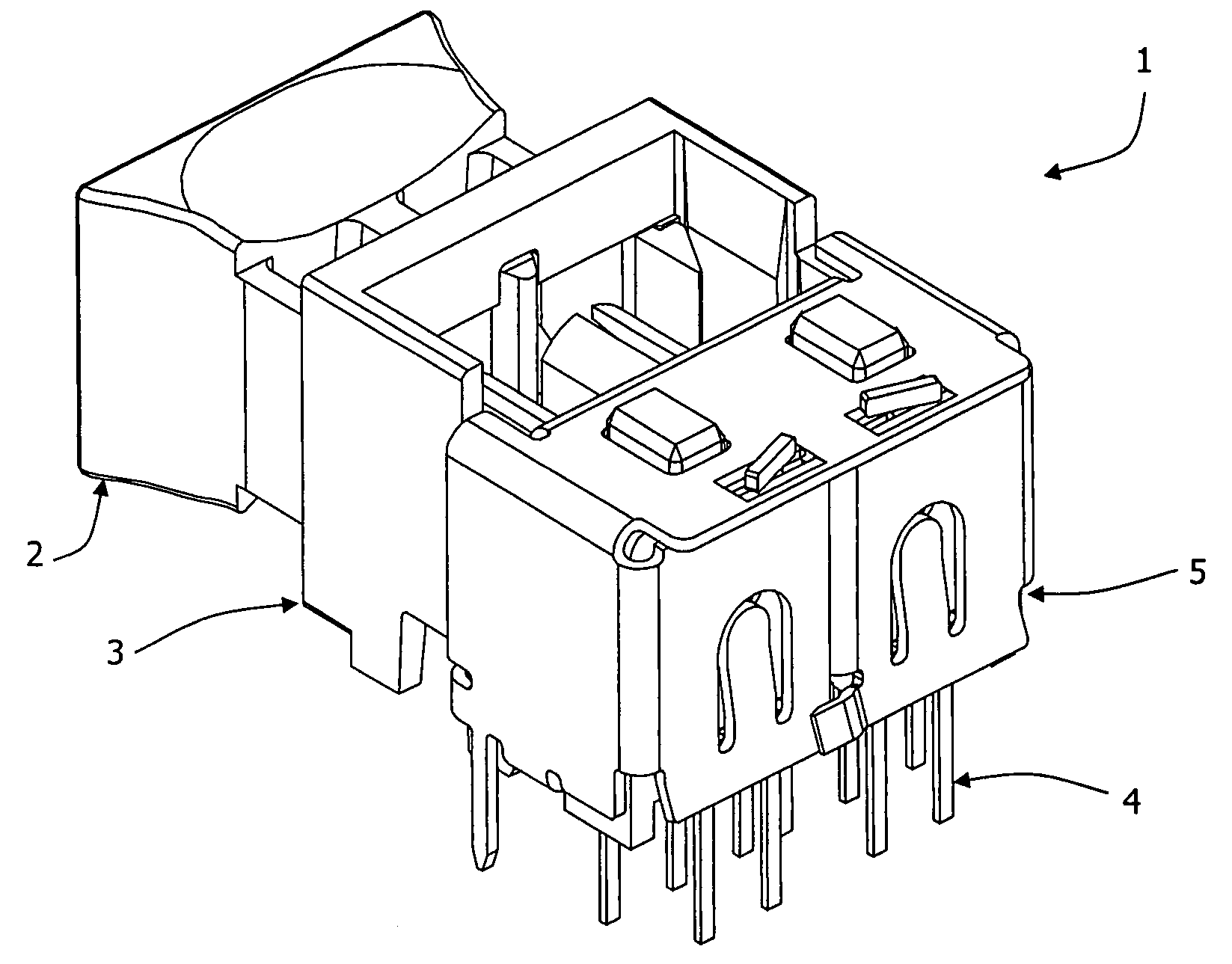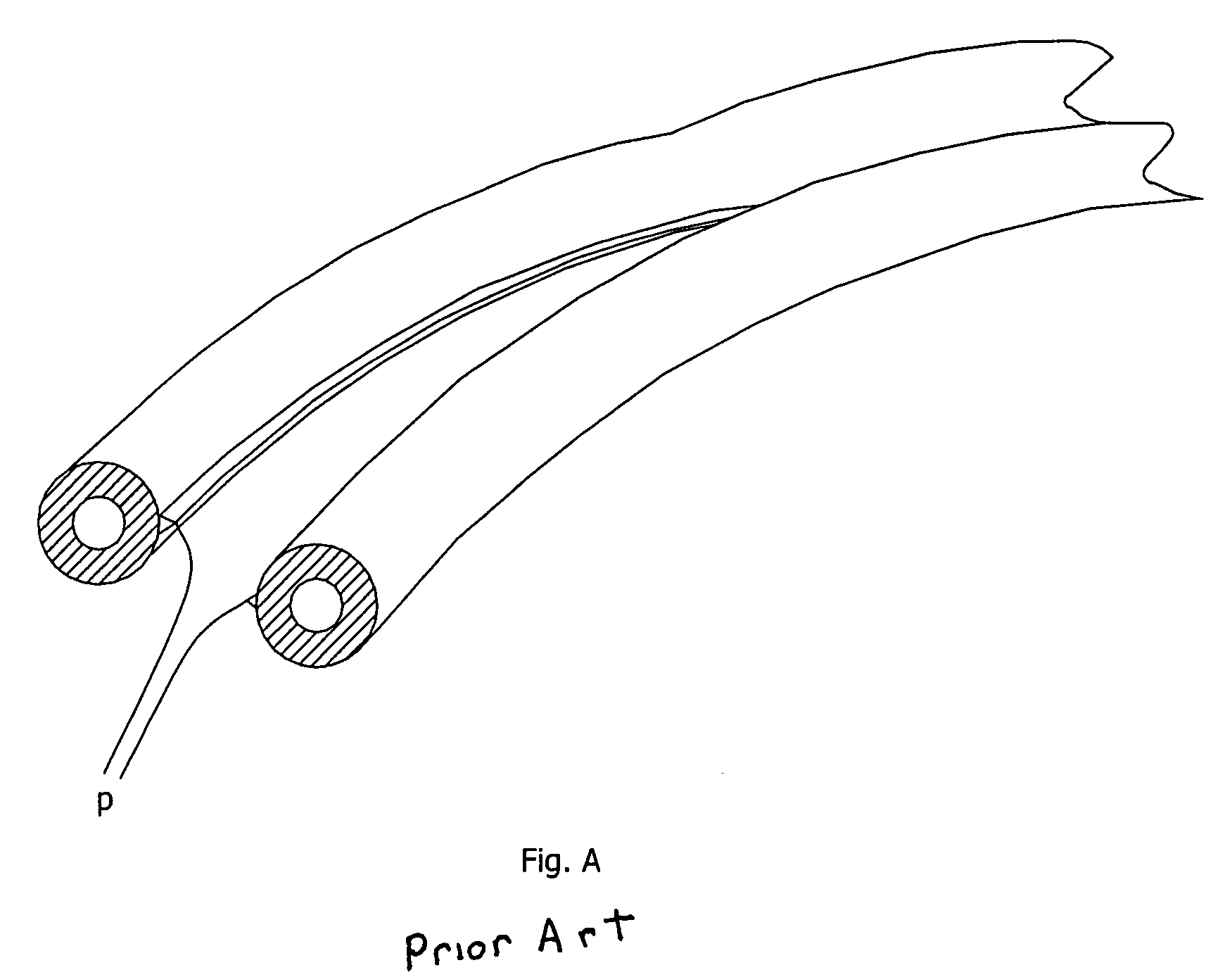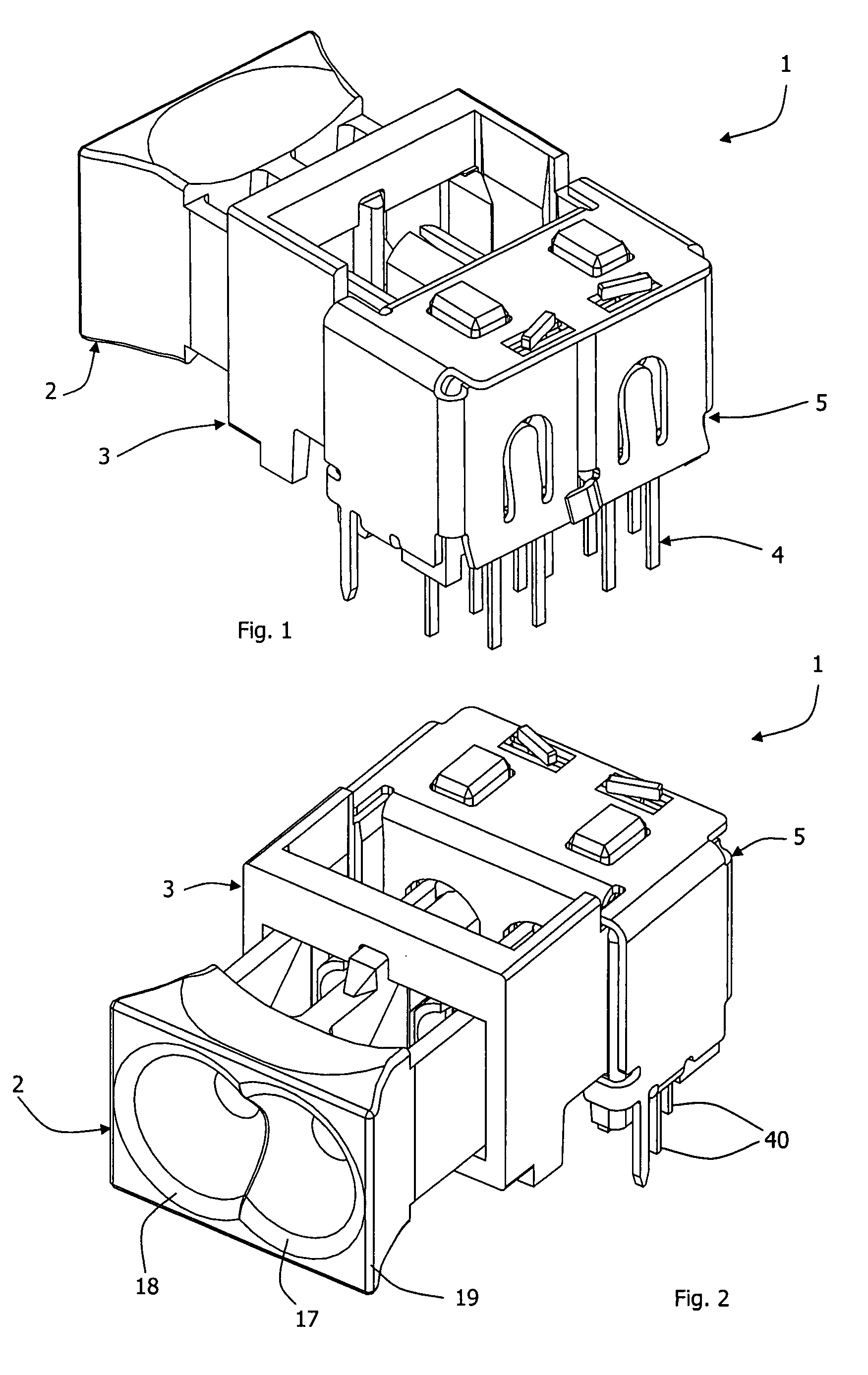Optical connector
a technology of optical connectors and connectors, applied in the field of optical connectors, can solve the problems of cable eccentricity in the hole, interference with the proper alignment between the core of the optical fibre and the optical element, and damage or additional material on the circumference of the jacket of each strand,
- Summary
- Abstract
- Description
- Claims
- Application Information
AI Technical Summary
Problems solved by technology
Method used
Image
Examples
Embodiment Construction
[0054]Referring to FIGS. 1 to 10 an optical connector 1 comprises four main components, namely:
[0055]2, a clamp;
[0056]3, a housing into which the clamp 2 slides;
[0057]4, two optical elements, a transmitter and a receiver; and
[0058]5, an EMI metal shield surrounding the elements 4.
[0059]The clamp 2 has two parallel through holes 10 and 11 for receiving fibre terminations, each through-hole having a generally conical mouth 17, 18 for convenient guidance of a fibre termination. Inside of the through-holes 10 and 11 there are side resilient clamp members 12, and there is a single central clamp member 13. The clamp 2 is of moulded plastics construction, and the clamp members 12 are resilient in the lateral plane. The central clamp member 13 on the other hand has little flexibility and remains essentially static throughout the clamping operation. Each resilient clamping member 12 has a tooth 15 at its end for snap-fitting engagement with the housing 3 at open and closed positions, as desc...
PUM
 Login to View More
Login to View More Abstract
Description
Claims
Application Information
 Login to View More
Login to View More - R&D
- Intellectual Property
- Life Sciences
- Materials
- Tech Scout
- Unparalleled Data Quality
- Higher Quality Content
- 60% Fewer Hallucinations
Browse by: Latest US Patents, China's latest patents, Technical Efficacy Thesaurus, Application Domain, Technology Topic, Popular Technical Reports.
© 2025 PatSnap. All rights reserved.Legal|Privacy policy|Modern Slavery Act Transparency Statement|Sitemap|About US| Contact US: help@patsnap.com



